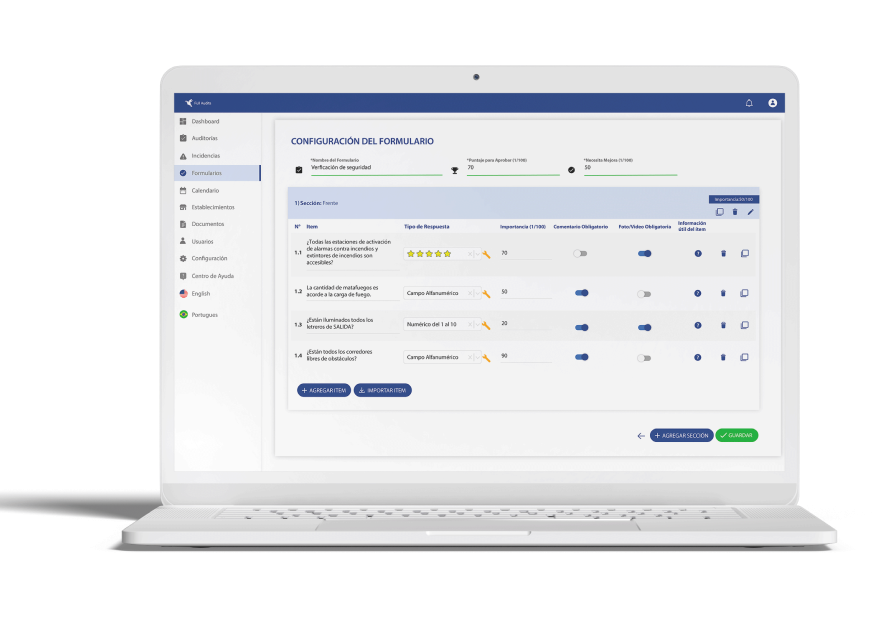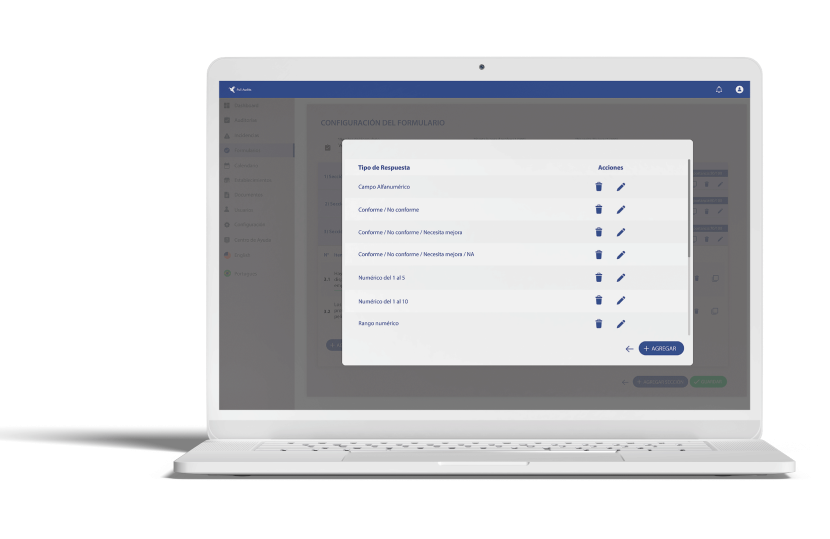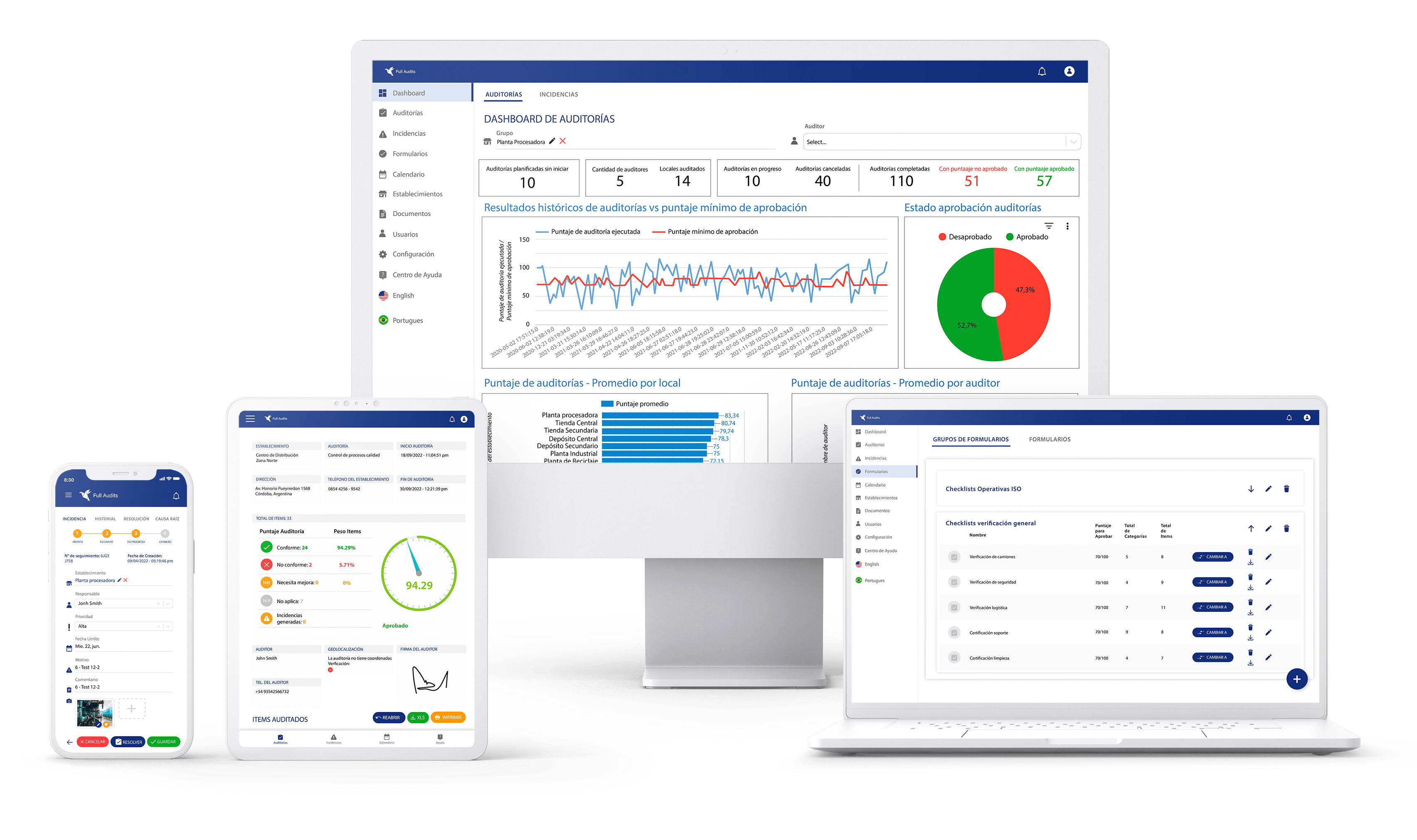
Checklists
Create digital checklists and stop using paper, PDF, Excel or Word
Customize your checklists and run inspections
Save time
Eliminate the use of paper
Generate reports
Data consolidation
Audit with automated tools, evolving and leaving behind manual processes.
Build your checklists in simple steps ...
1.
Assign checklist name, minimun approval score, and in case of using the “need improvement” answer type, determine the score on 100 of the items that will receive this qualification.


2.
Create the number of sections, subsections and items you need, assigning each one their respective name and hierarchy of importance. Add item “compliance information” to help auditors to understand the approval criteria while running the inspection
3.
Configure your checklists by assigning multiple response types for each item. Also, configur if later during the inspection the auditor will be required to include photos, video, or comments. The evidence can be configured to be optional or mandatory.

Customizable Checklists
Add comments, photos, videos, useful information and customize your own response type.

Migrate from Excel, PDF or Word to Full Audits in minutes!
The data loaded to the system is safely saved and available for other team members to be accessed anytime.
Preguntas frecuentes
¿Qué es un checklist?
Dentro de un sistema de gestión de calidad, una checklist es un listado o conjunto de ítems y preguntas enfocados en los procesos de documentación de una organización.
Consiste en un método sistemático de control que permite avanzar, a través de un seguimiento de diversas tareas, conductas y actividades que se realizan dentro de la empresa, con el fin de alcanzar un resultado.
¿Cómo crear un checklist?
Puedes crear una checklist siguiendo los siguientes pasos:
- Definir lo que se debe verificar antes de comenzar el proceso a trabajar.
- Establecer las etapas, momentos y frecuencia en la cual se deberá realizar el chequeo.
- Asignar responsables que llevarán a cabo el chequeo.
- Realizar un ambiente de testeo (o prueba piloto) para asegurar que todo funcione correctamente.
¿Qué son los tipos de checklist?
Los tipos de checklist consisten en la clasificación de formatos de chequeos a aplicar en función de las necesidades y objetivos de la organización.
Actualmente puedes encontrar las siguientes tipologías: de coordinación, de solución de problemas, de verificación de etapas y de seguimiento de tareas.
¿Cuáles son las características de una checklist?
Las características de una checklist se pueden definir en función de sus beneficios. Algunos de ellos son:
- Ayudan a incrementar la productividad.
- Facilitan la delegación de tareas.
- Contribuyen en la minimización de errores en un proceso.
- Permiten extraer datos de forma ordenada y sencilla.
- Brindan objetividad en los resultados.

